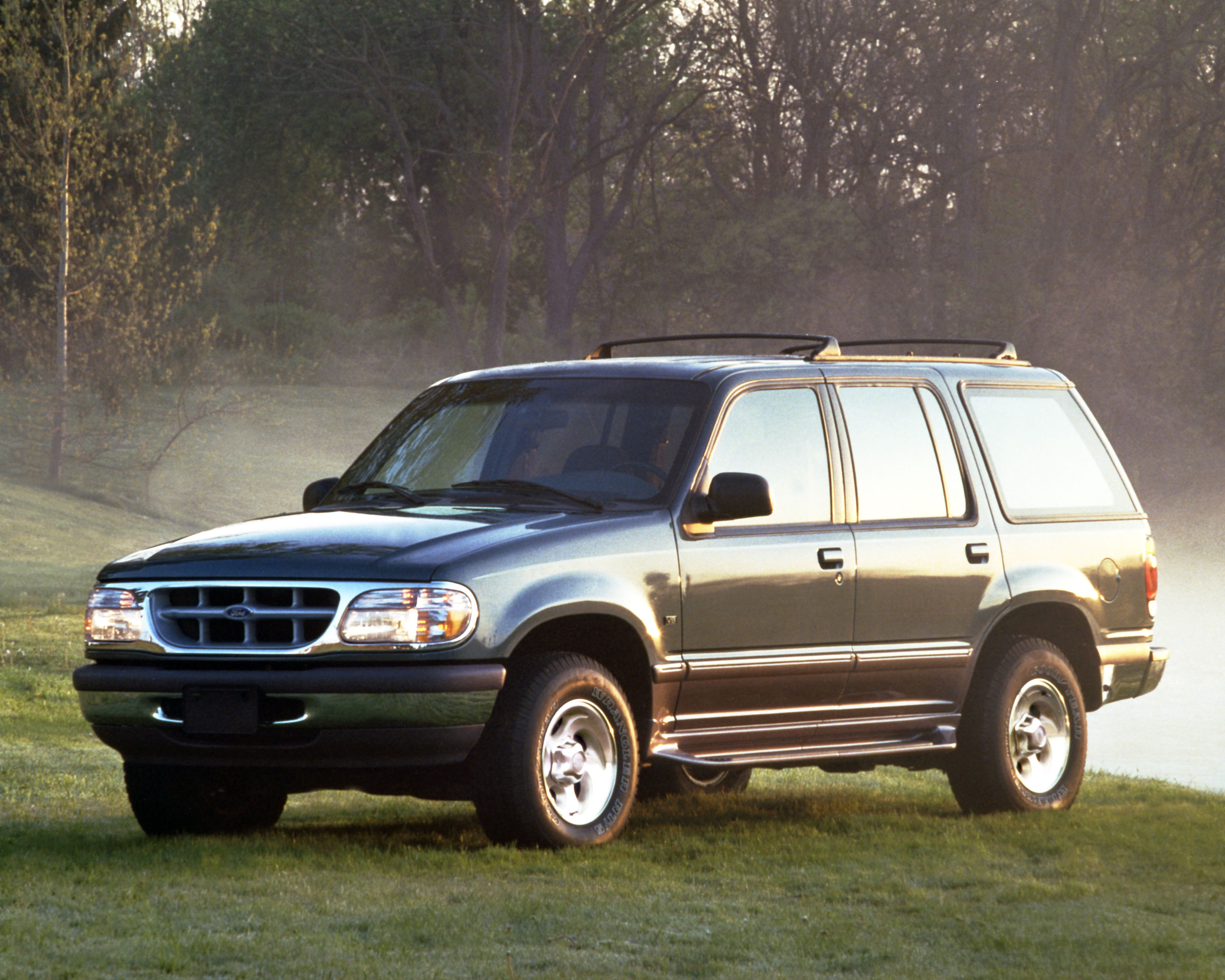Media | Articles
The Ford Explorer has come a long way in six generations
If you looked up the street in just about any suburban neighborhood in America in the early 2000s and didn’t see a Ford Explorer parked on the street or in a driveway, it was because there was one in parked in a garage. They were everywhere. After a dip in sales due to a lackluster economy, Explorer surged back and is once again among the nation’s top sellers.
When the Explorer debuted for the 1991 model year it wasn’t the first of its kind, the S-10 Blazer, Jeep Cherokee, and Ford’s own Bronco II were right there in the thick of the compact SUV boom. Explorer also wasn’t the most off-road capable in its class, even though its twin-traction-beam front suspension was no slouch. What the Explorer had was a combination of capability, comfort, and just-right sizing to hit the sweet spot and earn a spot in millions of family driveways. Now that Ford has unveiled its all-new 2020 Explorer, we thought it was time to delve into a brief history of one of America’s favorite SUVs and how it changed over the years to meet demands of a shifting market.
Pre- Ford Explorer
20180329152843)
Ford’s Bronco II, like the Mustang II, was a rebirth of a model that had grown larger over time. Sold alongside the full-size Bronco, the Bronco II was more in line with the original Bronco. Following on the heels of Chevrolet’s S-10 Blazer that was based on Chevrolet’s compact S-10 pickup, the Bronco II used the same recipe with Ranger sheetmetal from the B-pillars forward. Offered only as a two-door, it was nimble off-road, but not terribly practical.
First-generation Ford Explorer (1991-1994)
Marketplace
Buy and sell classics with confidence

No doubt prodded by Jeep’s success with four-door XJ Cherokee, Ford worked on a replacement for the Bronco II that was still based on the Ranger platform. The Ford Explorer debuted as a 1991 in both four-door and two-door Sport models, with the Sport model also sold as the Mazda Navajo. The Explorer still resembled a Ranger, although now it got unique door stampings, so the Ranger commonality ended at the A-pillar, at least on the exterior. Inside, the dash was shared with Ranger, as was its only engine, the peppy Cologne 4.0-liter V-6. Offered in several trim levels, including the upscale Eddie Bauer edition, Explorer sales were strong immediately, selling more than 150,000 in the US in the final few months of 1990 and 250,000 in its first full year on sale in 1991.
Second-generation Ford Explorer (1995-2003)

A major refresh in 1995 brought all-new front sheet metal, exclusive to Explorer, along with a rounded grille and headlights that previewed what would come with the 1997 F-150. The twin-I-beam front suspension on four-wheel-drive models was gone in favor of a more traditional SLA independent front suspension that improved ride quality. The 4.0-Liter V-6 remained, but the big news was the addition of a 5.0-liter Windsor V-8 in 1996.
As the rest of Ford’s car and truck lineup transitioned to Modular V-8 architecture and their overhead cams, the Explorer was the last holdout. Consequently, the 5.0-liter got some of the best factory Windsor parts ever made. This generation also gave birth to the upscale Mercury Mountaineer and the Explorer Sport Trac, which put an Explorer Sport front end on a modified four-door Explorer midsection and capped it off with a short bed and a tailgate from an F-150. Sales hit an all-time high of 445,000 units in 2000.
Third-generation Ford Explorer (2002-2005)

Production of the second-generation Explorer continued with two-door Sport into 2003 and with the Sport Trac into 2005, but the four-door, and therefore the bulk of Explorer production, moved to a whole new platform for 2002. It marked the first use of four-wheel independent suspension on a Ford truck and helped improve the ride quality even further. The IRS allowed for a lower floor height and a third-row seat, a first for domestic-market Explorers. Powertrains now include two-valve 4.6-liter Modular V-8 with a five-speed automatic, replacing the four-speed used previously on the V-8 models. In 2003, Lincoln used the platform and much of the Explorer sheet metal to create the Aviator.
Fourth-generation Ford Explorer (2006-2010)

The 4.6-liter V-8 got a big boost in power for 2006, up to 292 horses, as well as a new six-speed auto. A second-generation Explorer Sport Trac debuted in 2007 and received a V-8 option for the first time. Unfortunately, due to a poor economy, sales slumped below 100,000 units in 2008 and remained slow through 2010.
Fifth-generation Ford Explorer 2011-2019

For the first time ever, the Explorer launched on a FWD/AWD platform shared with the Ford Flex. The move to unibody construction made for a roomier vehicle with improved fuel economy thanks to a switch to a 240-horsepower EcoBoost four-cylinder and a new DOHC, 290-horsepower 3.5-liter Duratec V-6. In 2013, an EcoBoost V-6 joined the fray with 365 horsepower to create the most powerful Explorer yet.
Sixth-generation 2020-
20190109213934)
Back on a rear-wheel-drive platform, the all-new 2020 Explorer seems poised to take the SUV fight to Grand Cherokee with additional luxury accommodations in its Platinum trim and decent towing ratings, pulling up to 5600 pounds and preserving the three-row interior. The powertrains are new, but the top powerplant is still a 365-horsepower EcoBoost V-6, this time a 3.0-liter that packs even more torque that the 3.6-liter it replaces. That will change shortly, as an Explorer ST is coming with even more power, along with a rear- or all-wheel-drive hybrid for improved economy.










